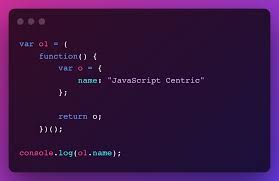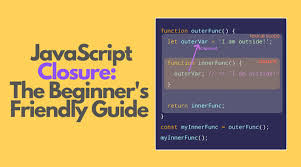Posted: September 27, 2024
What is a JavaScript Closure?
#javascript
#web development
#programming
A closure is a function in JavaScript that remembers the environment in which it was created, even after that environment is gone. This means that a closure gives you access to an outer function’s variables from within an inner function, even after the outer function has finished executing.
How Does It Work?
In JavaScript, functions can access variables from their own scope, the scope where they were defined, and any global variables. When a function is defined inside another function, the inner function can access variables from the outer function's scope. Even when the outer function has finished execution, the inner function (closure) can still access those variables.
Example:
javascript
Copy code
function outer() {
let outerVar = "I am from outer!"; // Outer function's variable
function inner() {
console.log(outerVar); // Inner function accessing outer variable
}
return inner; // Returning the inner function
}
const closureFunc = outer(); // outer() has finished execution
closureFunc(); // Output: I am from outer!
Explanation:
- Outer function (
outer) defines a variableouterVar. - Inner function (
inner) is defined inside the outer function and has access toouterVar. - Even after the
outer()function finishes execution, theinner()function, returned asclosureFunc, remembersouterVarand can still access it.
Practical Use of Closures:
Closures are often used to create private variables or for function factories.
1. Private Variables:
javascript
Copy code
function counter() {
let count = 0; // Private variable
return function() {
count++; // Increment count
console.log(count); // Access the private variable
};
}
const increment = counter();
increment(); // 1
increment(); // 2
Here, the count variable is private to the counter function and can only be modified or accessed through the returned inner function.
2. Function Factories:
You can use closures to create customized functions:
javascript
Copy code
function greeting(message) {
return function(name) {
console.log(`${message}, ${name}!`);
};
}
const sayHello = greeting("Hello");
const sayGoodbye = greeting("Goodbye");
sayHello("John"); // Hello, John!
sayGoodbye("John"); // Goodbye, John!
In this example, the outer function (greeting) takes a message and returns a function that can greet people by name. The returned inner function remembers the message passed to greeting when it was created.
Why are Closures Useful?
- Data encapsulation: Closures allow you to create private variables and functions that can’t be accessed directly from outside the function.
- Memory efficiency: Closures are useful for managing state without global variables.
- Async operations: They are often used in callbacks, asynchronous functions, and event listeners where you need to retain certain data.
Let me know if you need further explanation or more complex examples!

Admin
9 months ago
good

